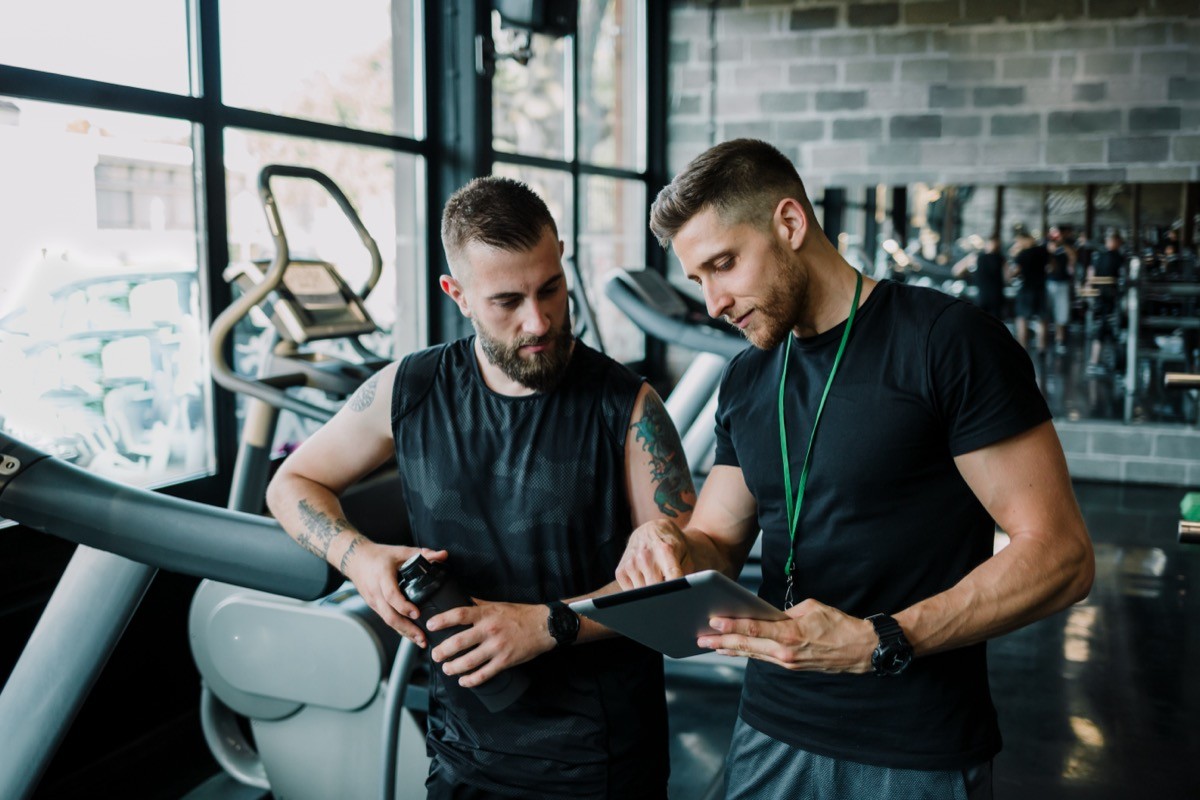8 Ways to Improve Your Running Technique, According to Trainers and Coaches

Running is one of the best cardio exercises you can do. Not only is great for stamina and burning calories, but it also gets you outside and often provides that lovely runner’s high. But while you may enjoy going out for a jog or hitting the treadmill at the gym, it’s important to consider form to maximize performance and avoid injury. Even better, when you improve your running technique, you might find your runs easier and more enjoyable.
“Proper technique when running reduces the amount of stress you place on your joints and muscles. This decreases your chance of developing common injuries associated with running, such as shin splints, stress fractures, and knee pain,” Ellen Thompson, CPT, head personal trainer at Blink Fitness, says. “It also helps to make sure you are running efficiently—when you have poor form, it puts excess strain on your body, which ultimately slows you down and makes you fatigue faster.”
With this in mind, you can take a few simple steps to elevate your running game. Read on for the top eight ways to improve your technique.
RELATED: Cardio vs. Core Workouts: How to Really Get a Flat Stomach, Experts Say.
1
Take a video of your stride.

As a first step, William Baldwin, professional running coach, recommends setting up your phone or video camera to film your form.
By doing so, Baldwin says, “You might be able to see some things you need to correct that you can try to do on your own. Or if you decide to work with a professional, you’ll have somewhere to start and some footage to show them”
Baldwin suggests propping up your cell phone when you’re on the treadmill or having someone ride a bike beside you while you’re running.
2
Address your posture.

Before you focus on your mileage, you should take a look at your posture.
“Running is not just about moving our feet faster—it is much more of a technical sport than people often realize,” Angela McAusland, certified running coach at We Run, says. “You only have to watch sports on TV and watch how the elite athletes run. They look elegant, toned, strong, and ‘tall.’ Even at the latter stages of grueling races, they still retain their posture and form.”
For “ideal posture,” keep your head looking forward, your shoulders down and back, and your core engaged, Thompson says.
RELATED: Trying to Lose Body Fat? Strength Training Might Be the Secret, New Study Says.
3
Don’t forget your arms.

Interestingly enough, your arms are also important to your overall running form.
“The first thing I’m looking for when watching someone’s running form is the height of their hands during all the phases of running,” Baldwin says. “We want to avoid ‘low hands’ or hands down by our pockets during the downward phase of our arm swing.”
He recommends “going ribs to chin,” where the low point of your arm swing is at your ribs and towards your back, and the upswing is going back to your chin and sternum.
“Our feet follow our hands. If the hands go up and forward, so will our feet, giving us more lift and better propulsion,” he explains. “Low hands get low feet, which brings a shuffle stride without much lift.”
4
Or your elbows.

Elbows, too, are integral.
“Many runners need to slightly close the angle where their forearm meets their bicep. This will help keep our hands up and prevent us from having ‘heavy hands’ where we drop them aggressively in the downswing,” Baldwin points out. “We lose a lot of stored energy when that forearm drops aggressively. Keep the elbow angle slightly higher.”
RELATED: 8 Surprisingly Effective New Jogging Tips, According to Fitness Experts.
5
Lean forward.

You should also correct your technique by ensuring you have a “slight forward lean,” Baldwin says.
“Being upright or leaning back is our natural braking mechanism,” he explains. “If we’re running and constantly leaning back, then we will be slightly braking the entire time, losing heaps of energy.”
When you’re leaning back, your feet may land too far out in front of your body and your hips, which can lead to injury.
“A slight forward lean gets the feet back in the ideal force-loading position and lets us tap into the momentum we’re building with each stride,” Baldwin says. “When you find the right angle of forward lean, most folks will also notice that this position is also where they can more fully access their glutes!”
6
Take shorter steps.

Of course, when you’re running, you want to think about your stride. Since you want to avoid overstriding, McAusland suggests keeping your knees in line with your hips and feet and landing with a “soft knee.”
“Keep your steps short, quick, and light—a higher cadence (steps per minute) will lead to less ground contact time, enabling a more efficient stride rate,” she says.
A word to the wise, however: Baldwin advises focusing less on cadence if you’re a new runner.
“More and more studies show massive variances in cadence among runners. It all depends on your height, movement patterns, pace, and many other factors,” he warns. “Find where you move the most comfortably with good form, and cadence will happen. Don’t reverse it.”
RELATED: The 12-3-30 Workout Is the New Treadmill Exercise Everyone’s Talking About.
7
Stay present and maintain focus.

When it comes to your gaze, Rachel MacPherson, CSCS, CPT, author at Garage Gym Reviews, suggests keeping your eyes focused between 10 and 20 feet ahead of you on the ground in order to “help maintain alignment.”
But in addition to focusing your eyes, you also need to focus your mind.
“Stay present as you’re running; running can be an excellent coping mechanism to manage stress, and you can tend to trail off in your mind, dissociating from your body and getting caught up in your mind,” Gina Newton, NASM-certified CPT and marathon runner, says. “Try to focus on your feet hitting the ground, feeling your knees bend and straighten, etc. Ultimately, nothing should hurt while running, especially over many miles.”
8
Get an assessment.

If you need some instruction on how to improve your technique, trainers and running coaches recommend consulting a professional.
“One of the best ways to work on improving your technique is to get some help from a running coach—someone who can assess how you run and give you instant feedback on some areas for improvement,” McAusland shares. “I can honestly say that several lightbulbs went off the first day I received coaching—and I remember thinking, ‘Why didn’t I know this before?'”